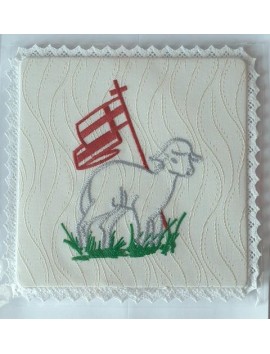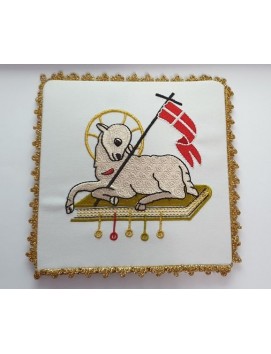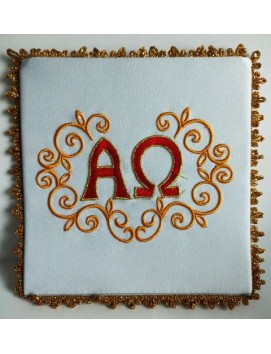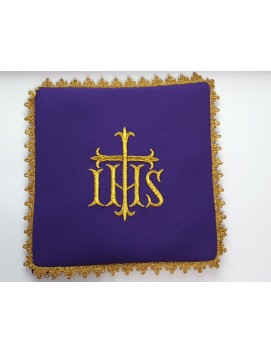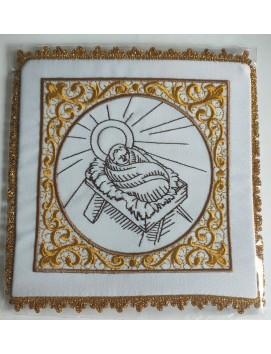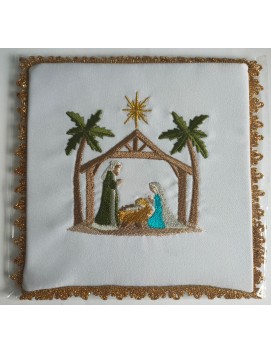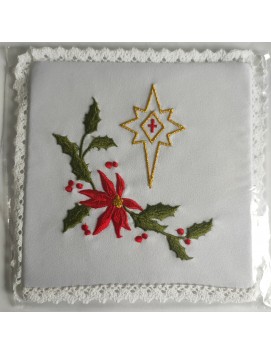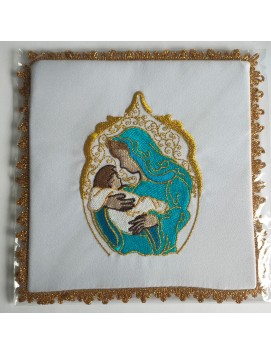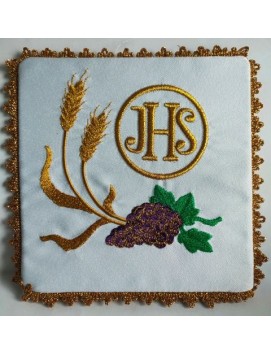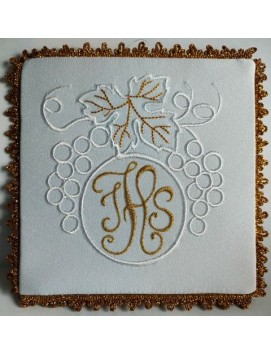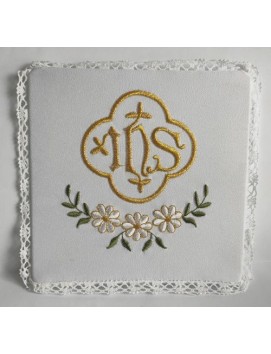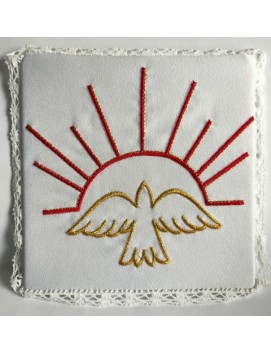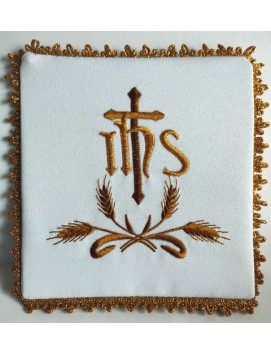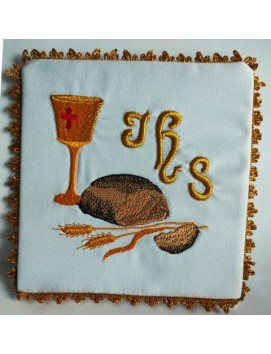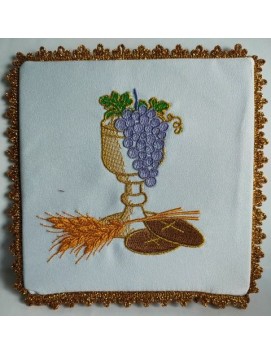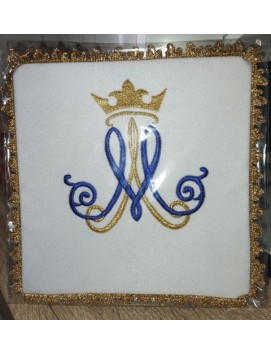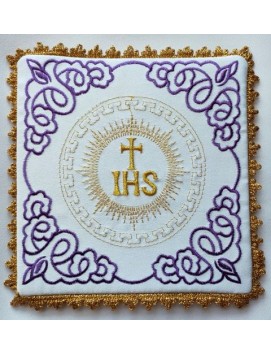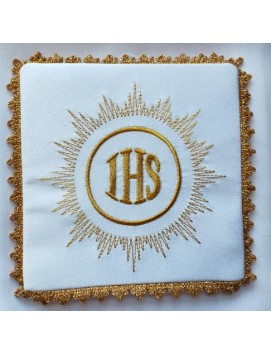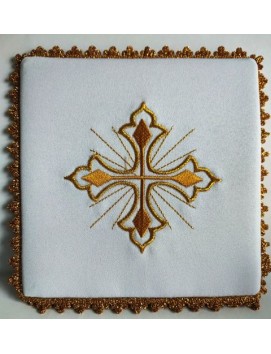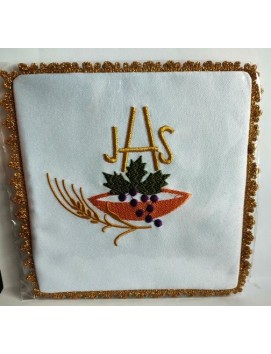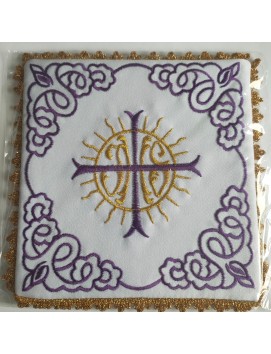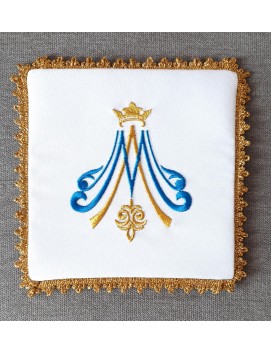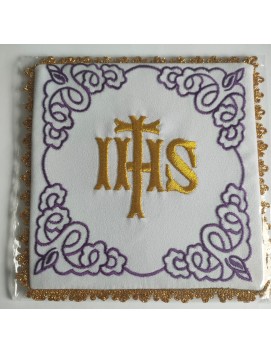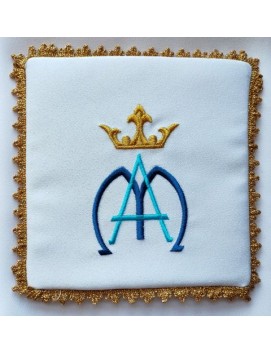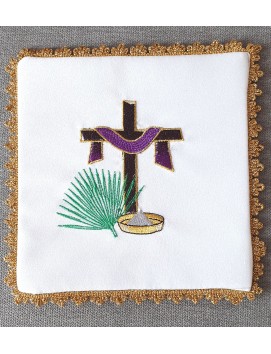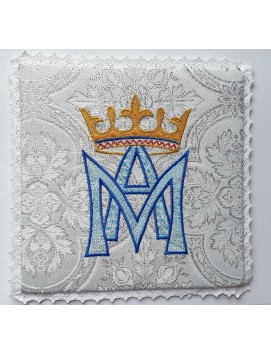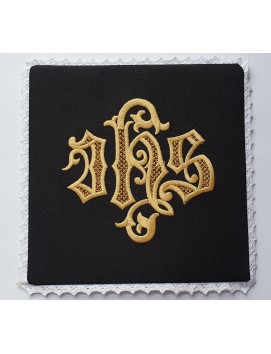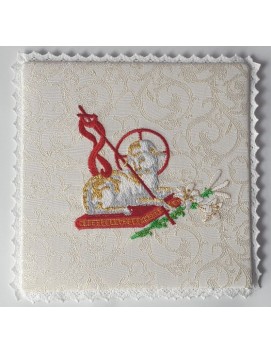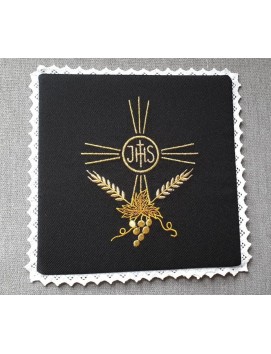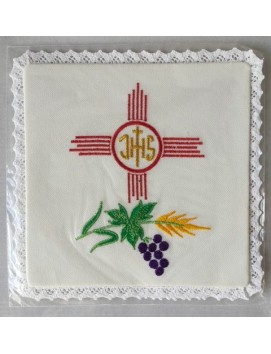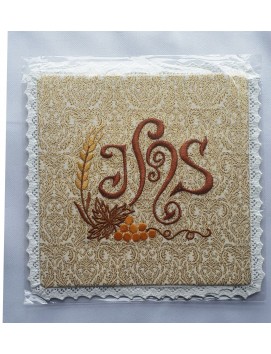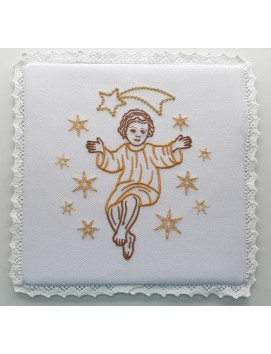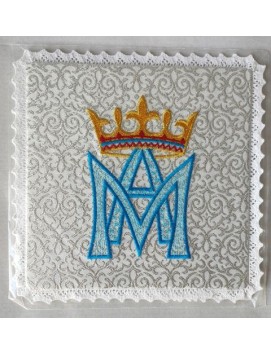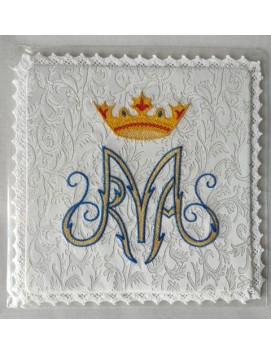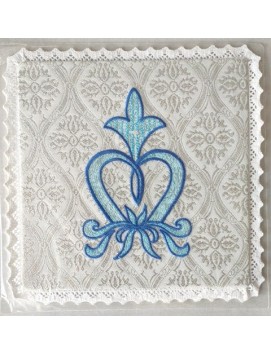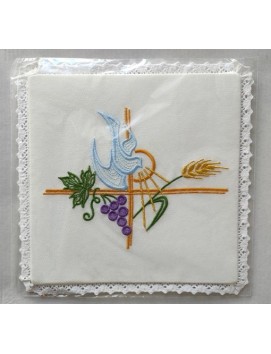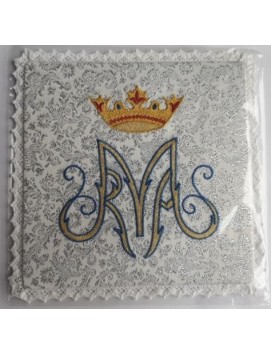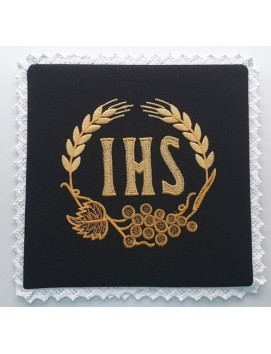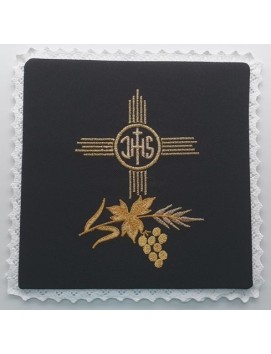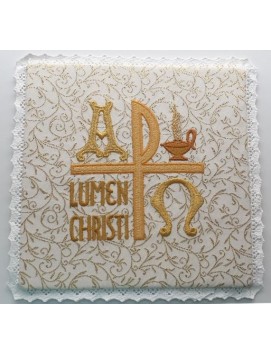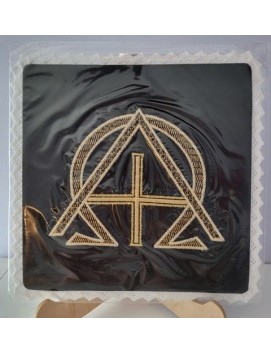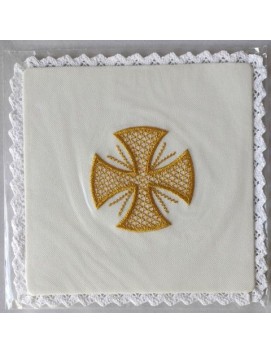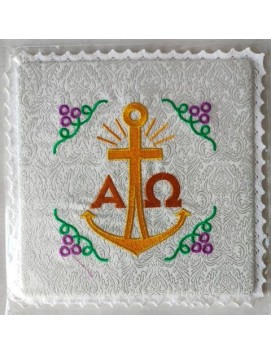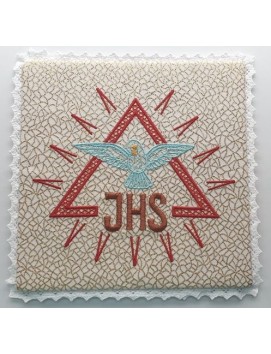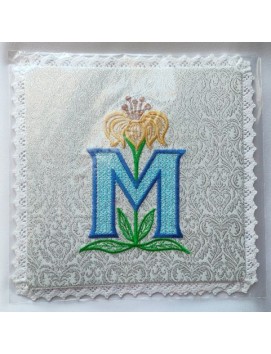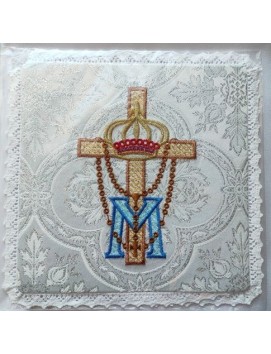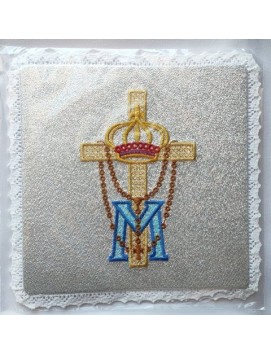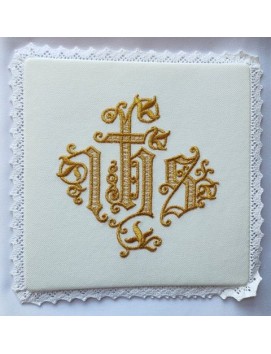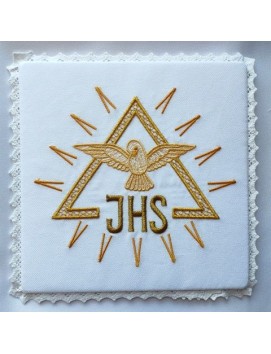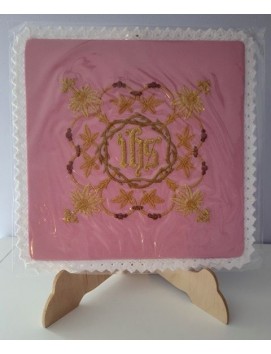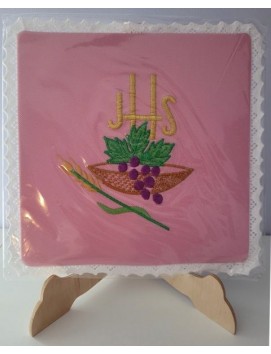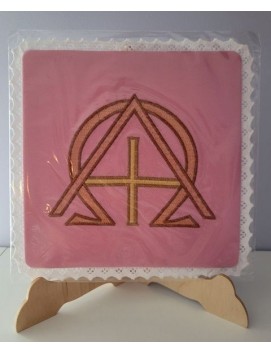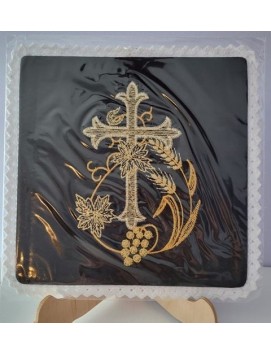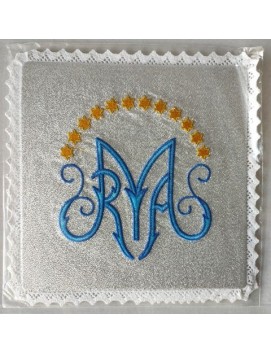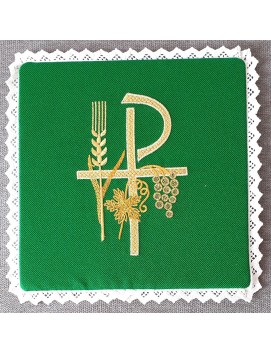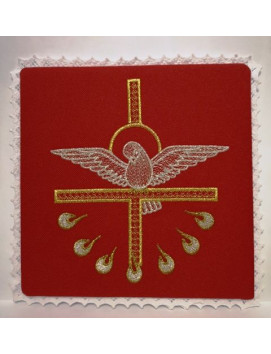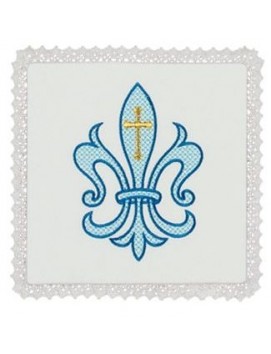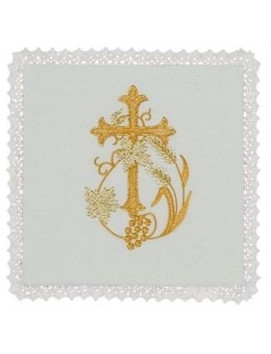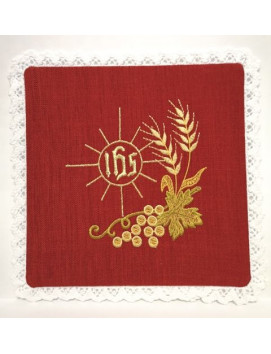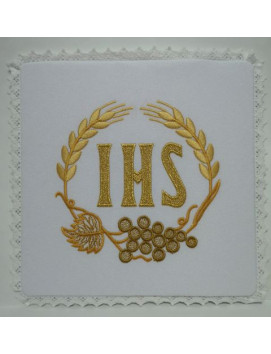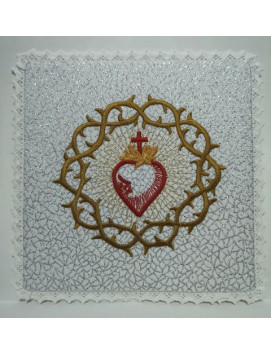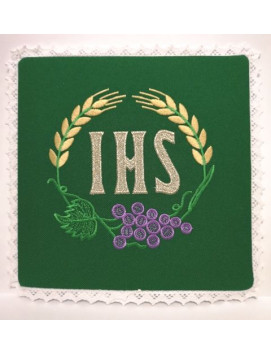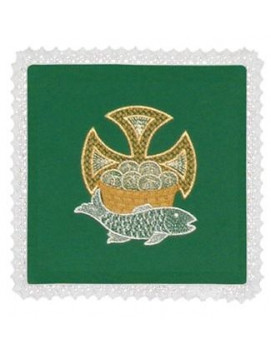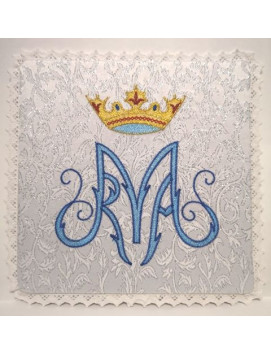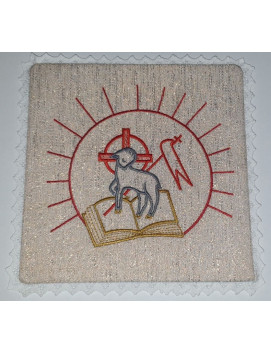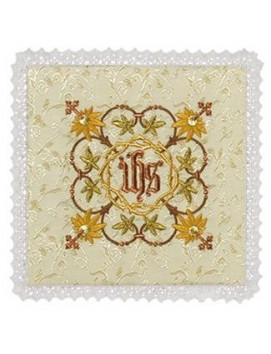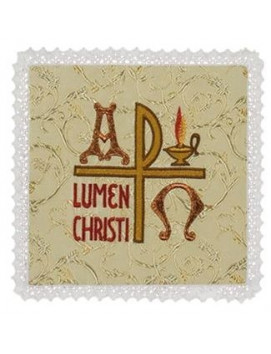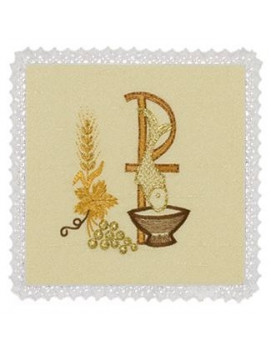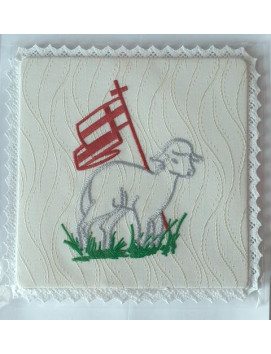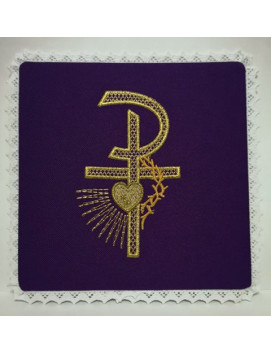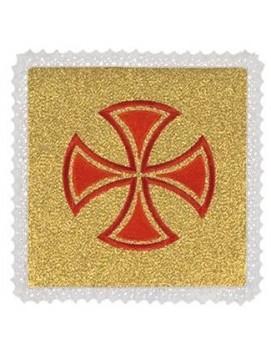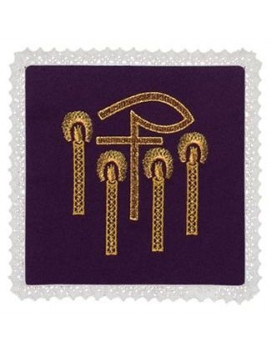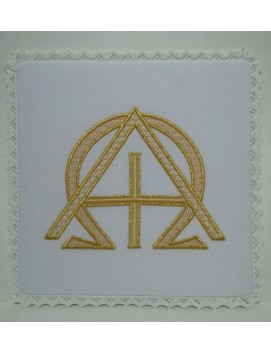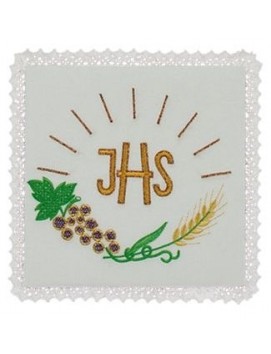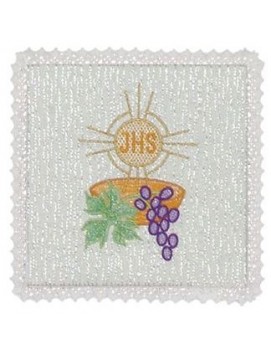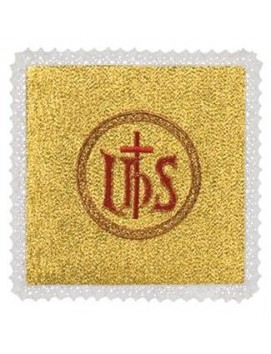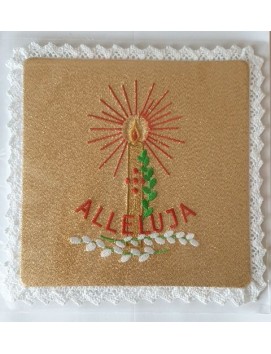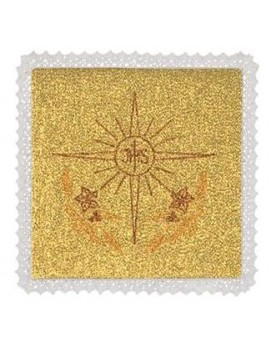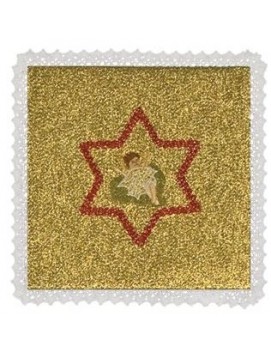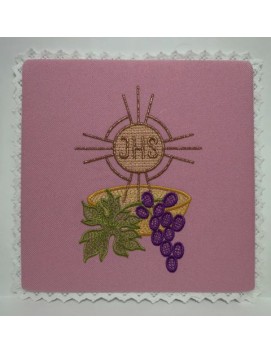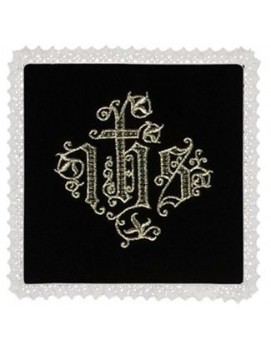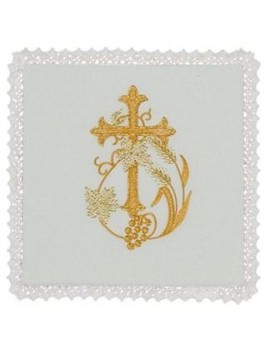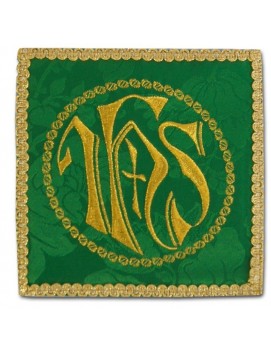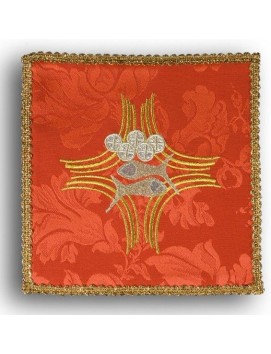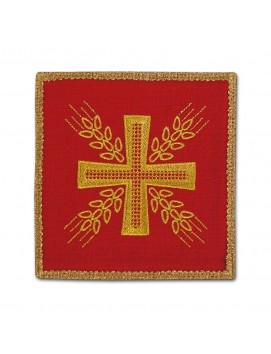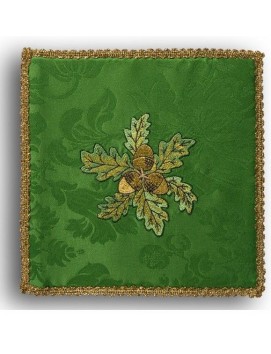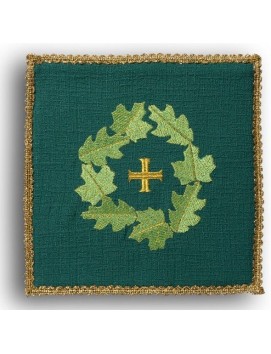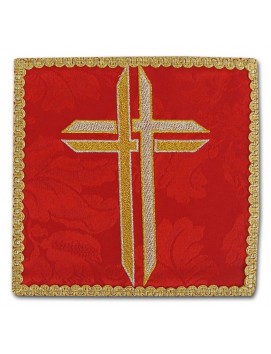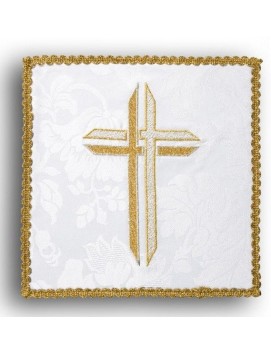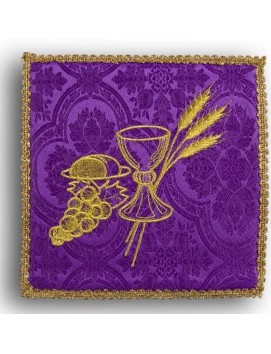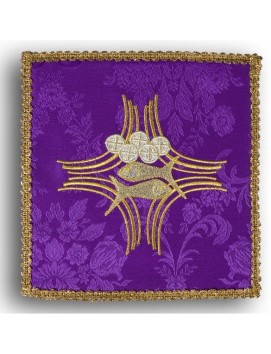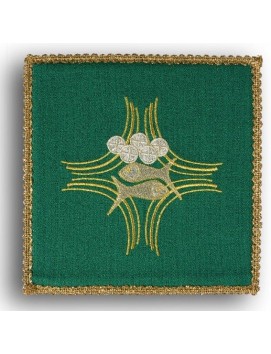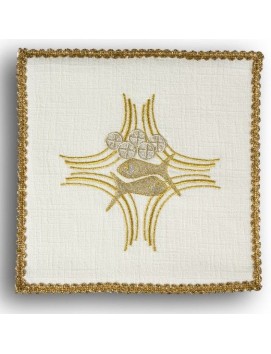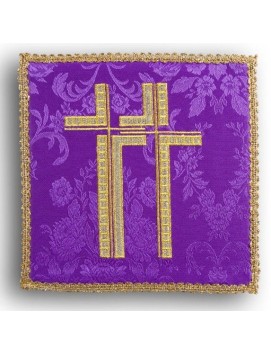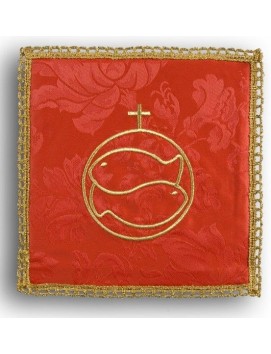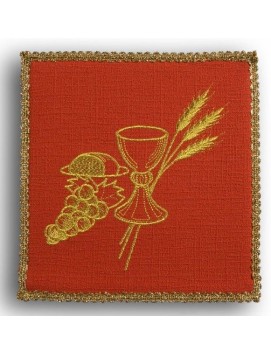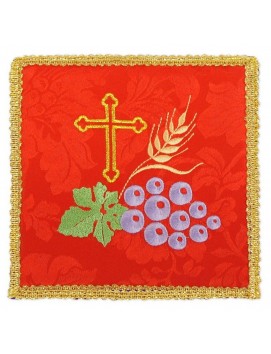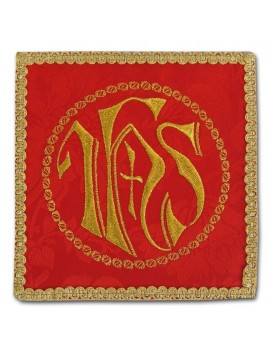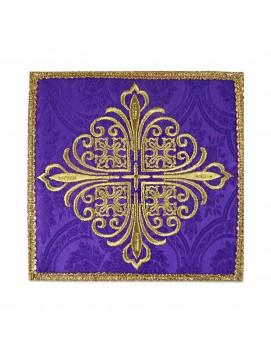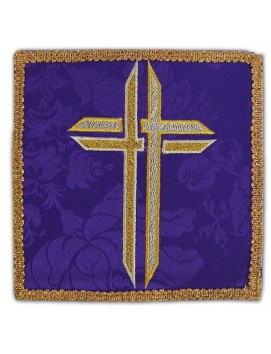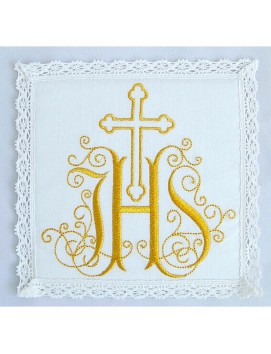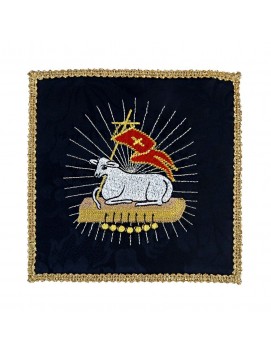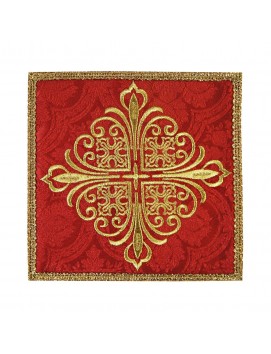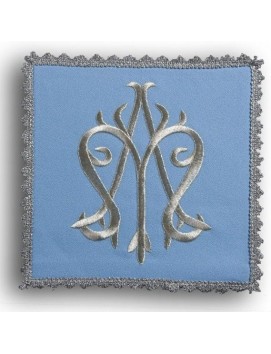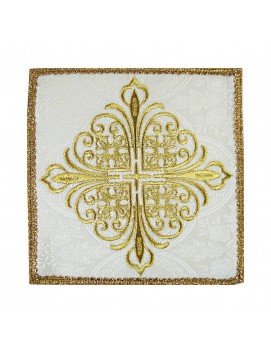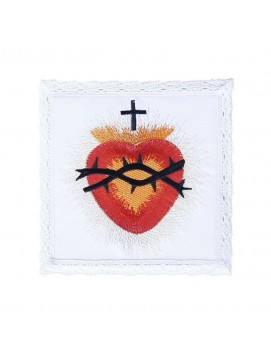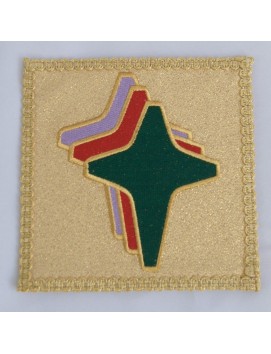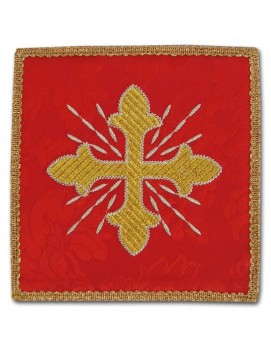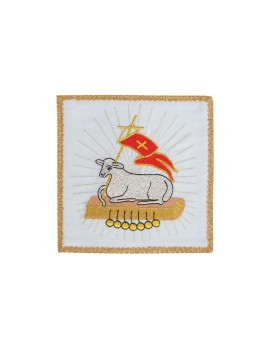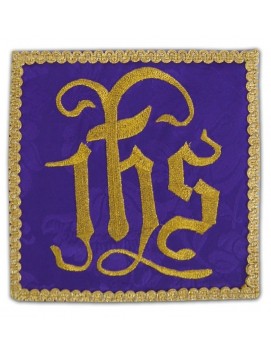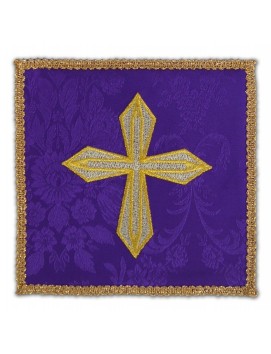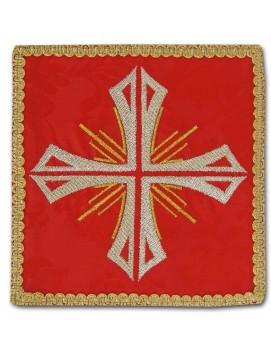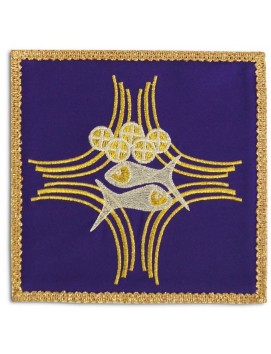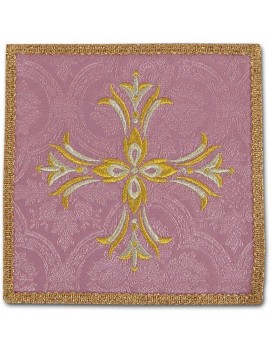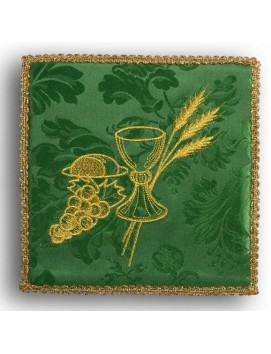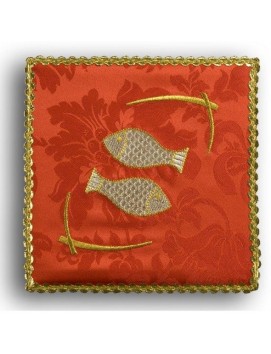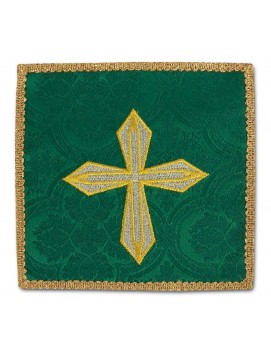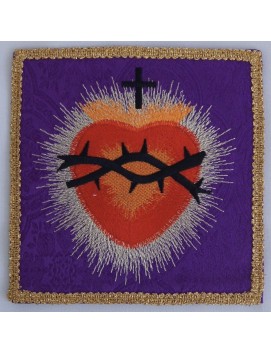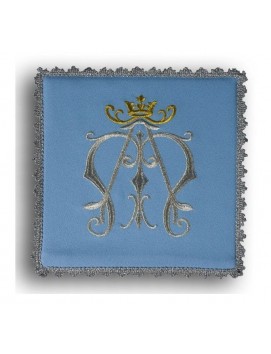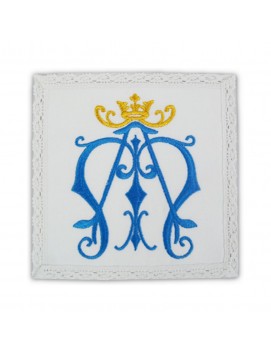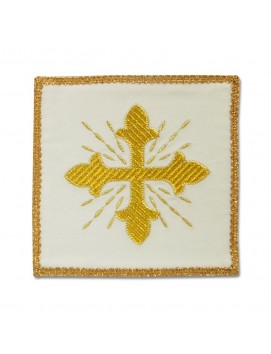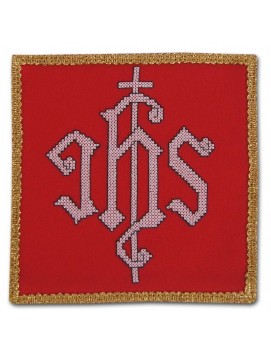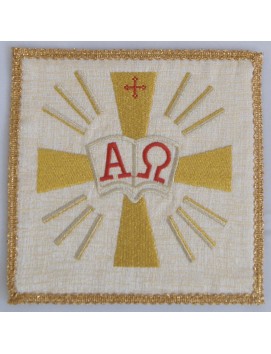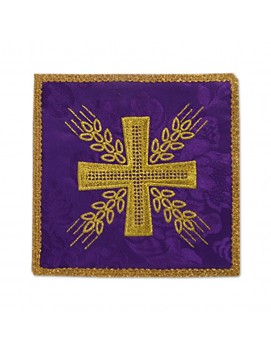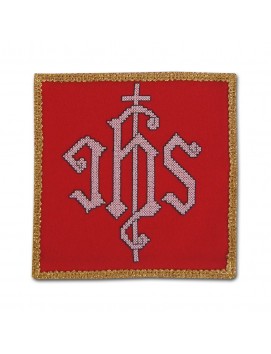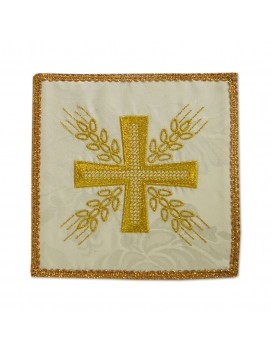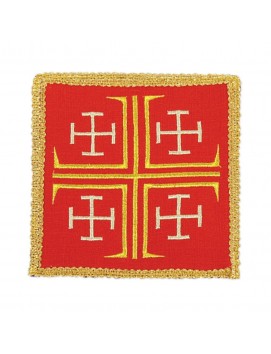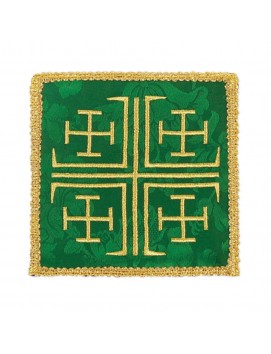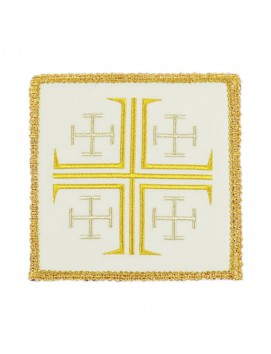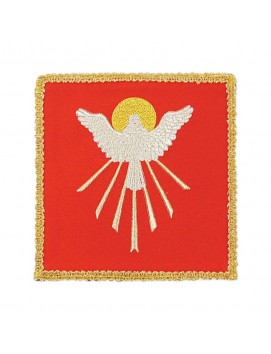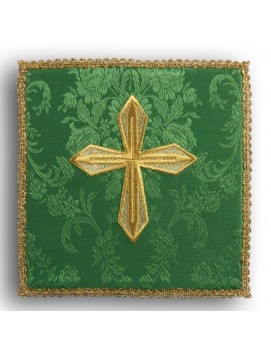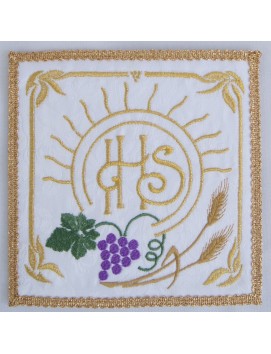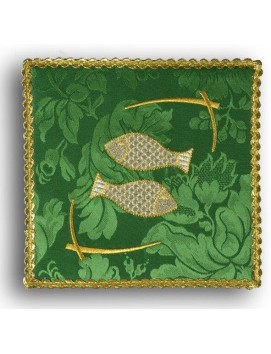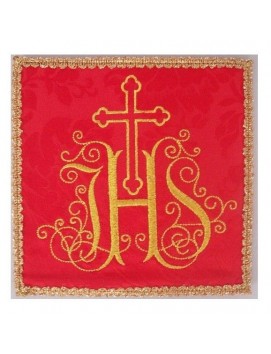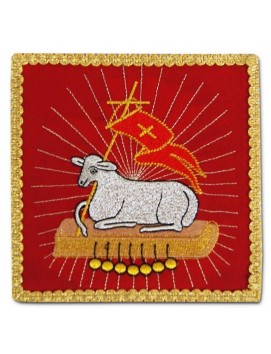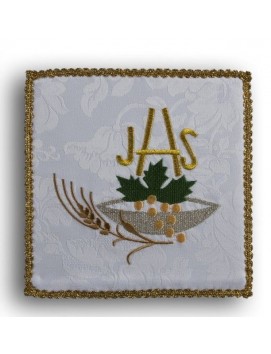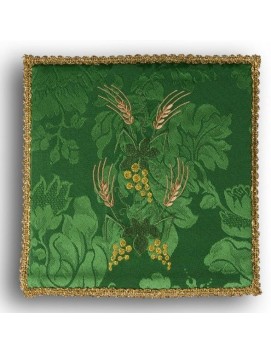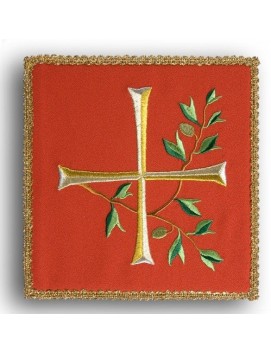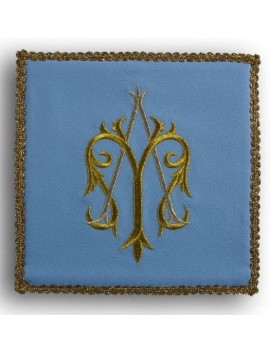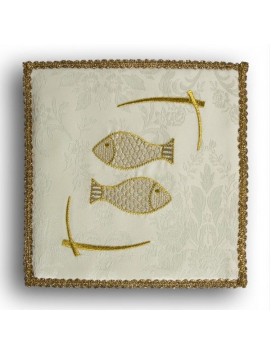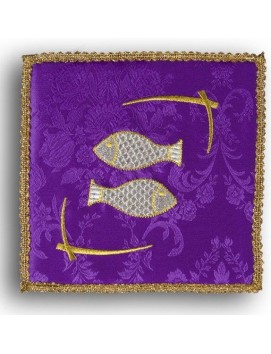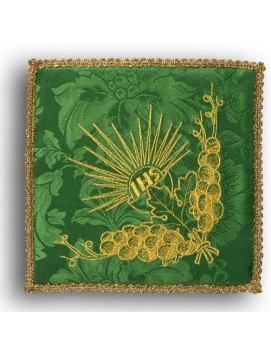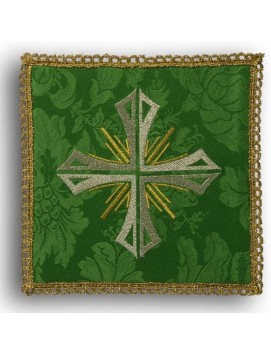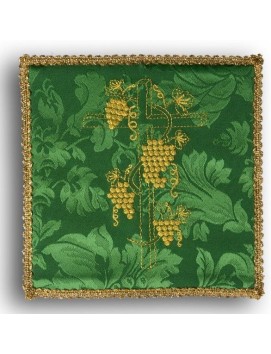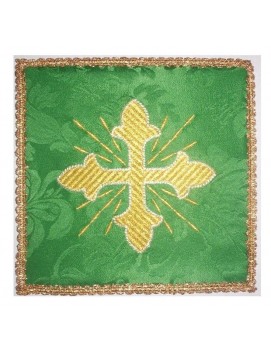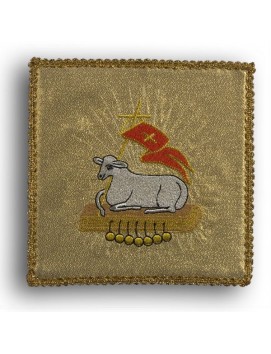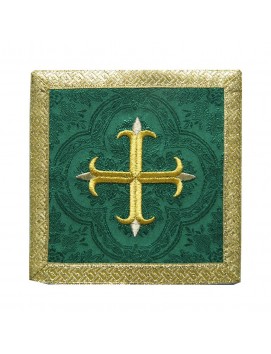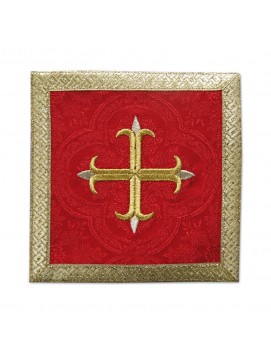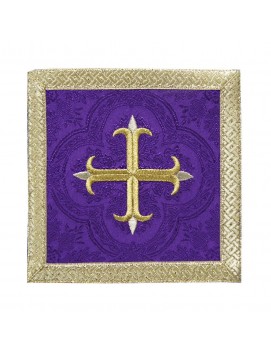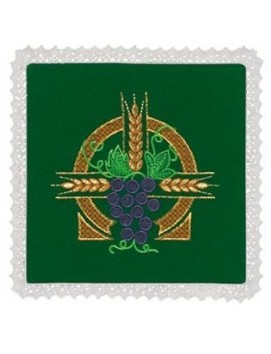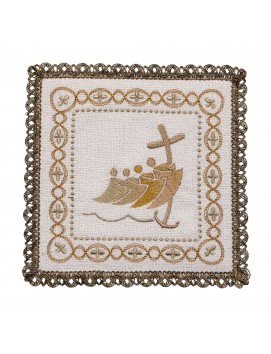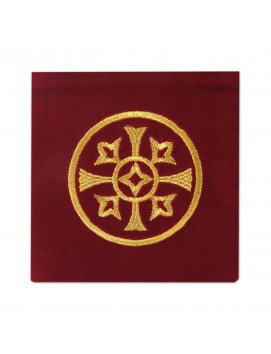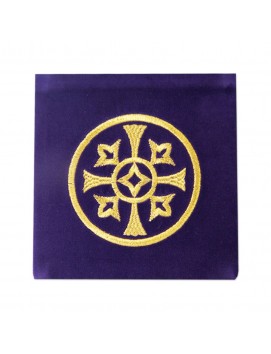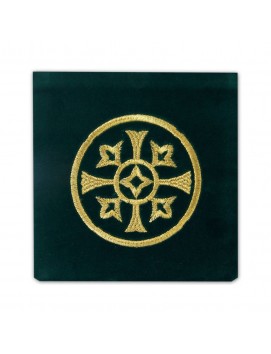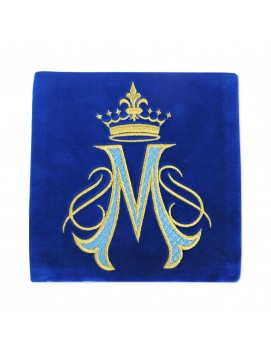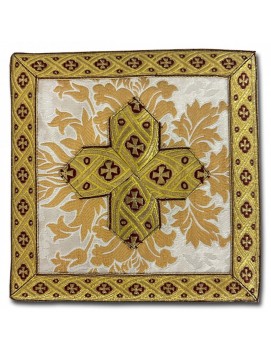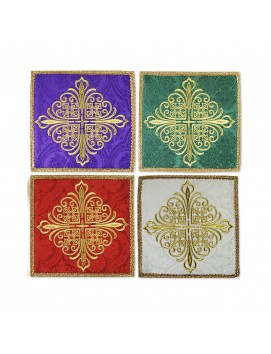No products
Pall
A Church pall is a cloth that covers the chalice during the celebration of the Eucharist in the Catholic Church. It is a square, stiffened white linen cloth that is usually adorned with a cross or other Christian symbols. The pall is placed over the chalice and paten to protect them from dust and other impurities. The use of the pall is a reminder of the Christian dignity of the Eucharist and the importance of the chalice and paten in the celebration of the Mass. The rules for the pall's color and use vary depending on religious and cultural traditions. In the Catholic Church, the pall is traditionally white, but it may also be black or violet. The pall is an important part of the Catholic liturgy and is used during the celebration of Mass and other liturgical services.
A Church pall is a cloth that covers the chalice during the celebration of the Eucharist in the Catholic Church. It is a square, stiffened white linen cloth that is usually adorned with a cross or other Christian symbols. The pall is placed over the chalice and paten to protect them from dust and other impurities. The use of the pall is a reminder of the Christian dignity of the Eucharist and the importance of the chalice and paten in the celebration of the Mass. The rules for the pall's color and use vary depending on religious and cultural traditions. In the Catholic Church, the pall is traditionally white, but it may also be black or violet. The pall is an important part of the Catholic liturgy and is used during the celebration of Mass and other liturgical services.
Understanding the Church Pall
The church pall is a sacred cloth with deep roots in Christian liturgical traditions. It serves as a symbolic and functional covering in various religious ceremonies, most notably during the Eucharist and funeral services. Let's delve into the significance, history, and contemporary use of the church pall, unraveling its role in expressing the Christian faith.
The Church Pall in Liturgical Use
In the celebration of the Eucharist, the church pall is a stiffened square card covered with white linen, often adorned with a cross or other Christian symbols. Its primary purpose is to protect the Eucharistic elements in the chalice from dust and insects, serving as a reminder of the sanctity and dignity of the sacrament. The pall's color and design may vary depending on religious and cultural traditions, but it is traditionally white, symbolizing purity and reverence.
The Funeral Pall: A Symbol of Equality and Baptism
At Christian funerals, the church pall takes on a different form. It is a large cloth that drapes over the casket, symbolizing the white garment given at baptism and representing the deceased's life in Christ. This use of the pall underscores the belief that all are equal in the eyes of God, as stated in James 2:1-9. The pall also serves as a visual reminder of the hope of resurrection and eternal life, which is central to Christian doctrine.
The Evolution of the Church Pall
Historically, the church pall has evolved from brightly colored and patterned cloths to the more commonly seen pure white fabric. Initially used for practical purposes, the pall later gained symbolic significance, with the white color now commonly used to reflect the joy of resurrection and triumph over death. The pall can be decorated with a cross or other Christian symbols, emphasizing the sovereignty of Christ's triumph.
Customizing and Caring for Church Palls
Church palls can be personalized with embroidery or specific religious motifs that hold personal significance. While they are most commonly associated with Christian funerals, their use extends to other religious or cultural traditions as well. The care and reuse of church palls depend on personal preference and cultural practices, with gentle cleaning methods like spot cleaning or dry cleaning recommended for maintenance.
FAQs About Church Palls
What is the purpose of a church pall during the Eucharist?
The church pall covers the chalice during the Eucharist to protect the sacred elements from impurities, reminding us of the Christian dignity of the sacrament.
Why is a pall used at funerals?
The funeral pall symbolizes the white garment received at baptism, the deceased's life in Christ, and the equality of all souls before God. It also represents the hope of resurrection.
Can the church pall be personalized?
Yes, church palls can be embroidered with specific symbols or motifs that hold personal or religious significance.
How should a church pall be cared for?
Care instructions may vary, but generally, gentle cleaning methods are recommended. Always refer to the manufacturer's guidelines for proper care.
Is the church pall reused?
The reuse of church palls depends on personal and cultural preferences. Some may choose to reuse palls, while others prefer a new one for each service.
In summary, the church pall is a multifaceted liturgical item that carries profound symbolic weight in Christian worship. Whether covering the chalice during the Eucharist or draping over a casket at a funeral, the pall is a testament to the Christian values of sanctity, dignity, and hope in the resurrection.

